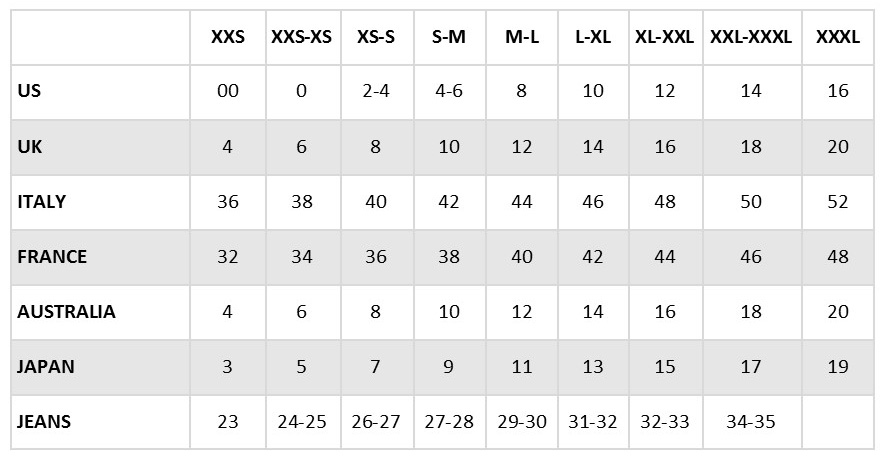Italy clothes size compared to US
When shopping for clothing, understanding the differences between Italian and US sizing is crucial due to the distinct sizing systems used in each region. Here’s a breakdown of how Italian clothing sizes compare to US sizes, along with explanations of related terms.
Women's Clothing Sizes
For women's clothing, Italian sizes are typically smaller than US sizes. The Italian sizing system often uses numbers that are about 4 to 6 sizes larger than their US counterparts.
- Example Conversion:
- Italian size 38 roughly corresponds to US size 2.
- Italian size 40 corresponds to US size 4.
- Italian size 42 corresponds to US size 6.
- Italian size 44 corresponds to US size 8.

Note: This is a general conversion and may vary slightly depending on the brand or specific item.
Men's Clothing Sizes
For men's clothing, particularly suits, jackets, and trousers, Italian sizes are usually labeled based on chest measurements in centimeters. The conversion to US sizes involves subtracting a certain number, typically 10, from the Italian size to get the US size.
- Example Conversion:
- Italian size 48 typically equates to US size 38 (for suits, jackets).
- Italian size 50 corresponds to US size 40.
- Italian size 52 corresponds to US size 42.
For pants, the difference can also be seen in the waist measurement. For instance, an Italian size 48 in pants generally corresponds to a US size 32.
Shoe Sizes
Italian and US shoe sizes also differ significantly.
- Women's Shoes: Italian sizes are generally 1.5 to 2 sizes larger than US sizes. For example, an Italian size 38 is roughly equivalent to a US size 7.5-8.
- Men's Shoes: Italian sizes are typically 1.5 to 2 sizes smaller than US sizes. For instance, an Italian size 43 corresponds to a US size 10.
Important Considerations
-
Fit and Style: Italian clothing tends to have a slimmer, more tailored fit compared to US clothing. It’s often recommended to size up when buying Italian clothes, especially for those who prefer a looser fit.
-
Brand Differences: Sizing can vary between brands, even within the same country. It's always best to check the specific brand's size chart.
-
Material and Stretch: Consider the fabric and its stretchability. For example, garments made of stretchy materials like jersey or spandex might offer more flexibility in sizing.
-
Trying Before Buying: If possible, try on the clothing before purchasing. For online shopping, carefully check the return policy in case the size does not fit.
Conclusion
Understanding the differences between Italian and US clothing sizes is essential for ensuring a good fit when shopping across these systems. Italian sizes generally run smaller and may have different conversions based on the type of clothing or shoes. Being aware of these differences and considering additional factors like fit and brand variations can help shoppers make informed decisions and find the right size.